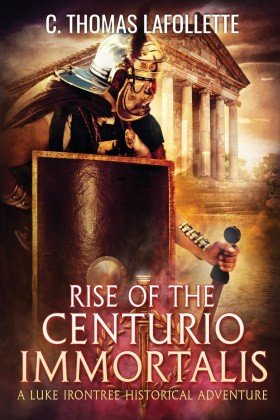
THE CULT OF MITHRAS

Mithras was a god with origins in Zoroastrianism but was known throughout Asia across many religions and traditions. Mithras had many names, depending on the culture—Mithra, Mitra, Mehr, and Mihr are some of the more common. Although the origins of how and why are obscured by time, a version of Mithraism become popular with the Roman elite, particularly throughout the legions.
There isn’t a lot known about how the Roman Cult of Mithras operated, but I’ve tried to piece together the various known elements. Though some of the things on page are my educated creations to fill in gaps and to serve the purpose of my story.
The Ranks - Symbols & Imagery (from lowest to highest)
Corax - raven, crow, beaker, caduceus
Nymphus - bridegroom, lamp, hand bell, veil, circlet
Miles - soldier, helmet, lance, drum, belt breastplate
Leo - lion, laurel wreath, thunderbolts
Perses - Persian, hooked sword, Phrygian cap, crescent moon, stars
Heliodromus - sun-runner, torch, Helios, whip
Pater - father, mitre, shepherd’s staff, garnet/ruby ring.
Pater Patrum - “Father of Fathers,” a title applied to particularly eminent or respected Paters.

GLOSSARY
Auxilia - Units of cavalry, ranged, and infantry fighters who assisted legions and filled specialized roles. Roman citizenship was not required. Citizenship could be earned by completing a 25-year term of service in the auxilia.
Centuria - A unit of 80 legionnaires plus servants led by a centurio
Centurio - The basic equivalent of a modern captain. He commanded his 80 men in combat and coordinated with the other centurio and higher officers.
Cohort - A unit of six centuria, 480 men at full strength
Contubernium - A tent unit of eight men who slept in the same small tent. The basic platoon unit that fought and worked together.
Decanus - The leader of a contubernium. A corporal.
Gladius - The short sword used by the legions. It had a sharp, stabbing point that formed the main attack but was balanced and could slash just as well. Romans were trained to stab vital areas or slash at exposed flesh.
Kataphraktoi - A heavily armored cavalry unit used by the horse cultures of the Middle East and the steppes regions. Usually horse and rider both wore armor. The rider used a large two-handed lance as their primary weapon.
Legio - A legion, composed of ten cohorts. A legion usually had several auxilia units assigned to them.
Miles - The term for a Legionnaire
Optio - Chosen by the centurio to assist his leadership and to take over if the centurio wasn’t available to lead the unit for whatever reason. The modern equivalent of a lieutenant.
Pilum - The specialized throwing javelin of the Roman legions. The shanks, made of softer iron than the tip, were joined to the shaft with a wooden pin. After the battle, pila (plural of pilum) would be collected, their shanks straightened and pins replaced. Each legionnaire carried two into battle—a light one that flew longer for the first throw and a heavier one for the shorter, second throw.
Scutum - The classic Roman shield. It was held by a bar in the center that ran parallel to the top and bottom. It could be used defensively and offensively.
Tesserarius - The legionnaire in charge of assigning guard duty for his centuria. The equivalent of a sergeant.
Vexillation - A vexillation was a group split off from its legion and given a special task or mission. Vexillatio in Latin.

ACKNOWLEDGMENTS
I want to thank my writing group—Chris, Cina, Danni, Deborah, Marina, & Miche—for all the feedback on this book. Without you, this story wouldn’t be anywhere as good as it is.
I would also like to thank my developmental editor Suzanne who is a constant cheerleader and an amazing eye, helping me fix the problems and make my stories awesome.
Raven makes the best covers and this one is no exception.
Last, I’d like to thank my partner Amy for all her support and the amazing job she does copy editing and proofing.
Without all y’all, this book wouldn’t exist.
ABOUT THE AUTHOR

























